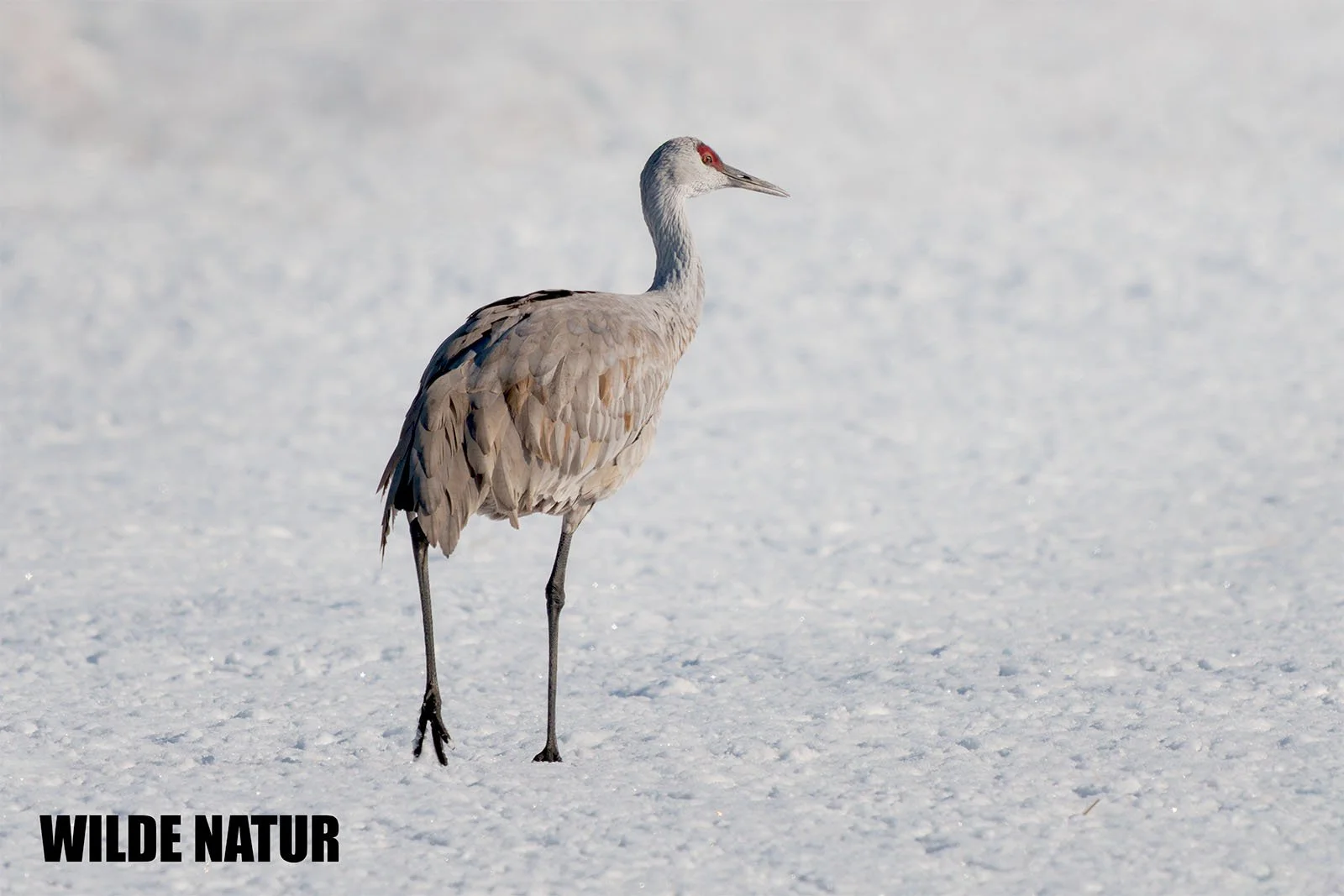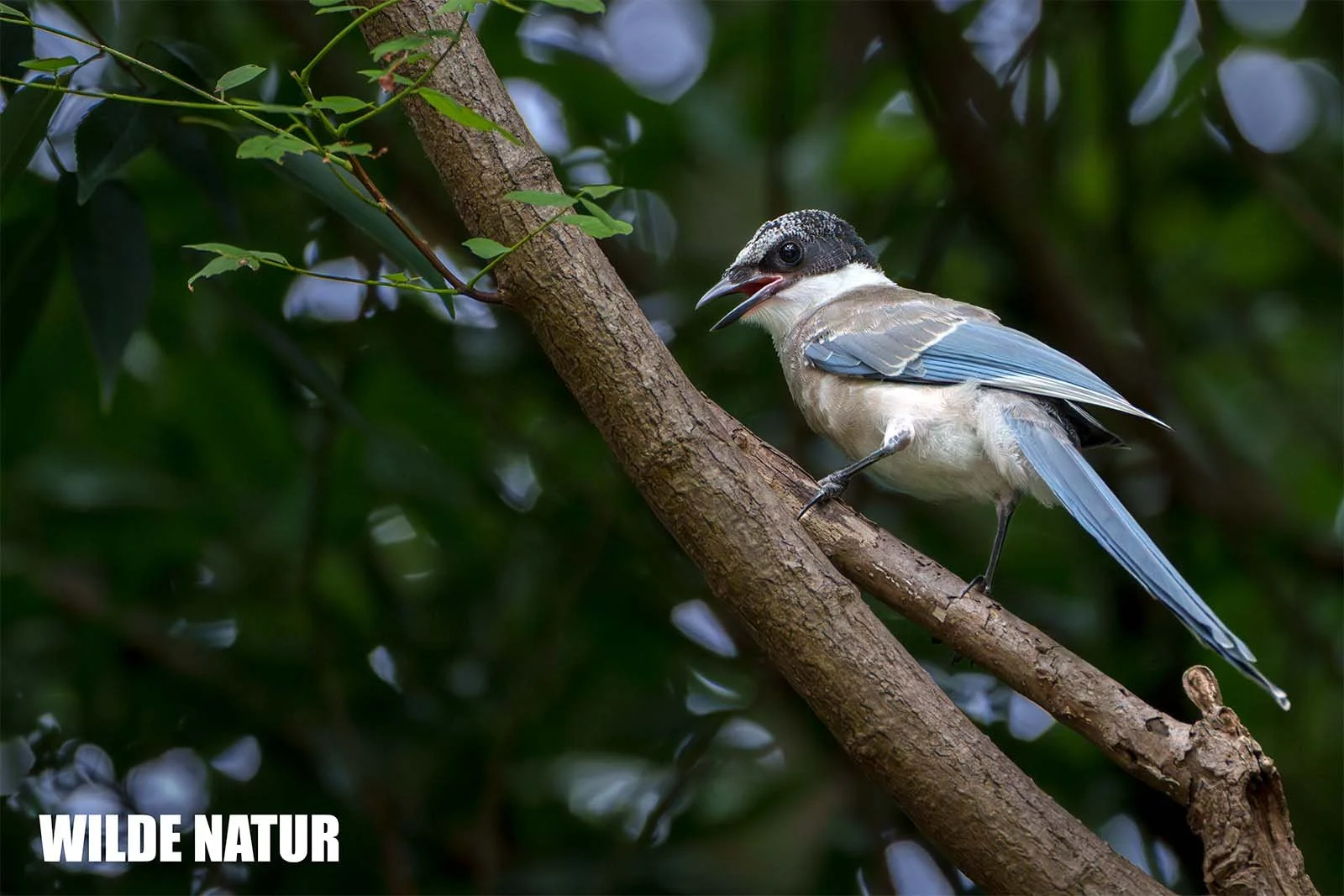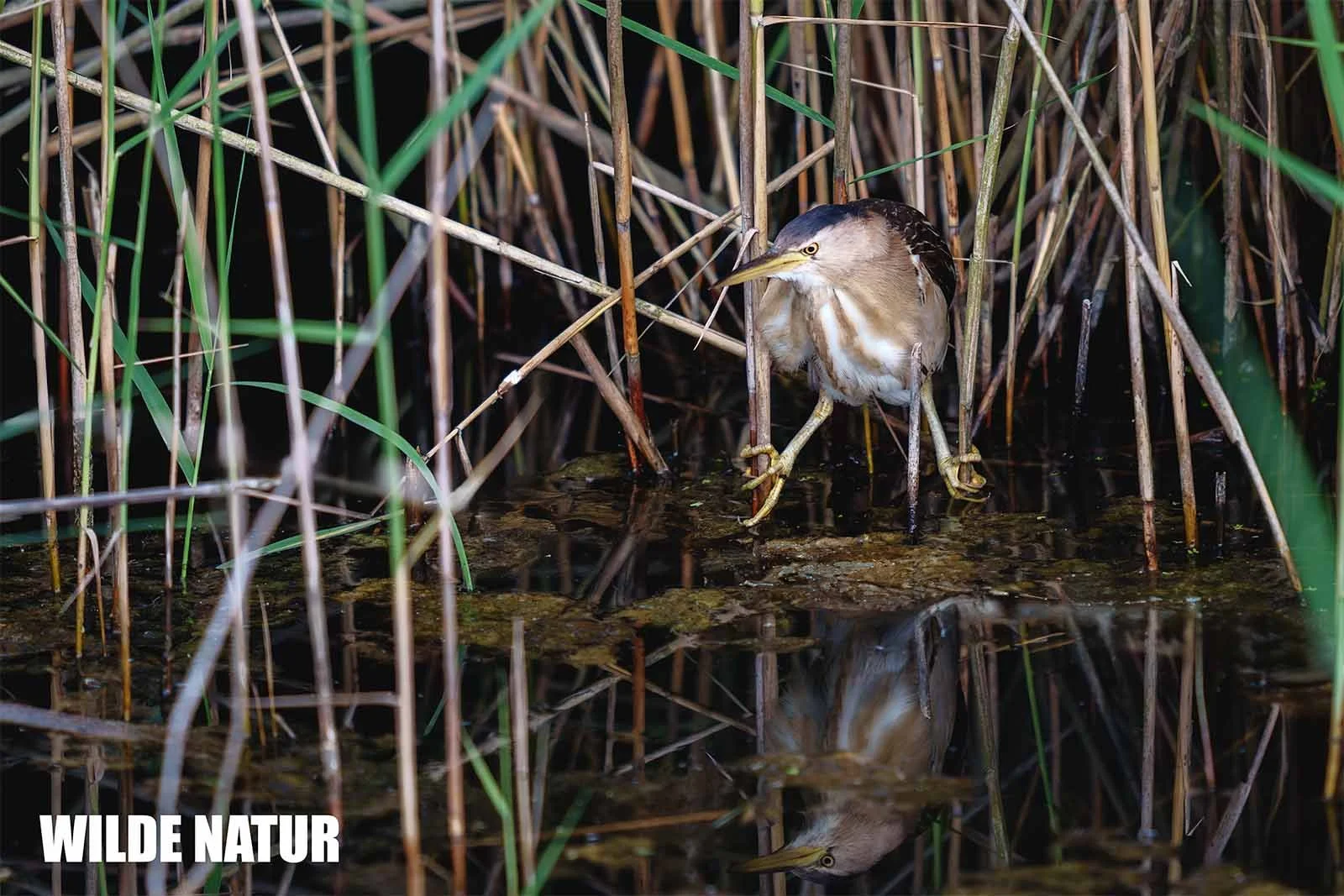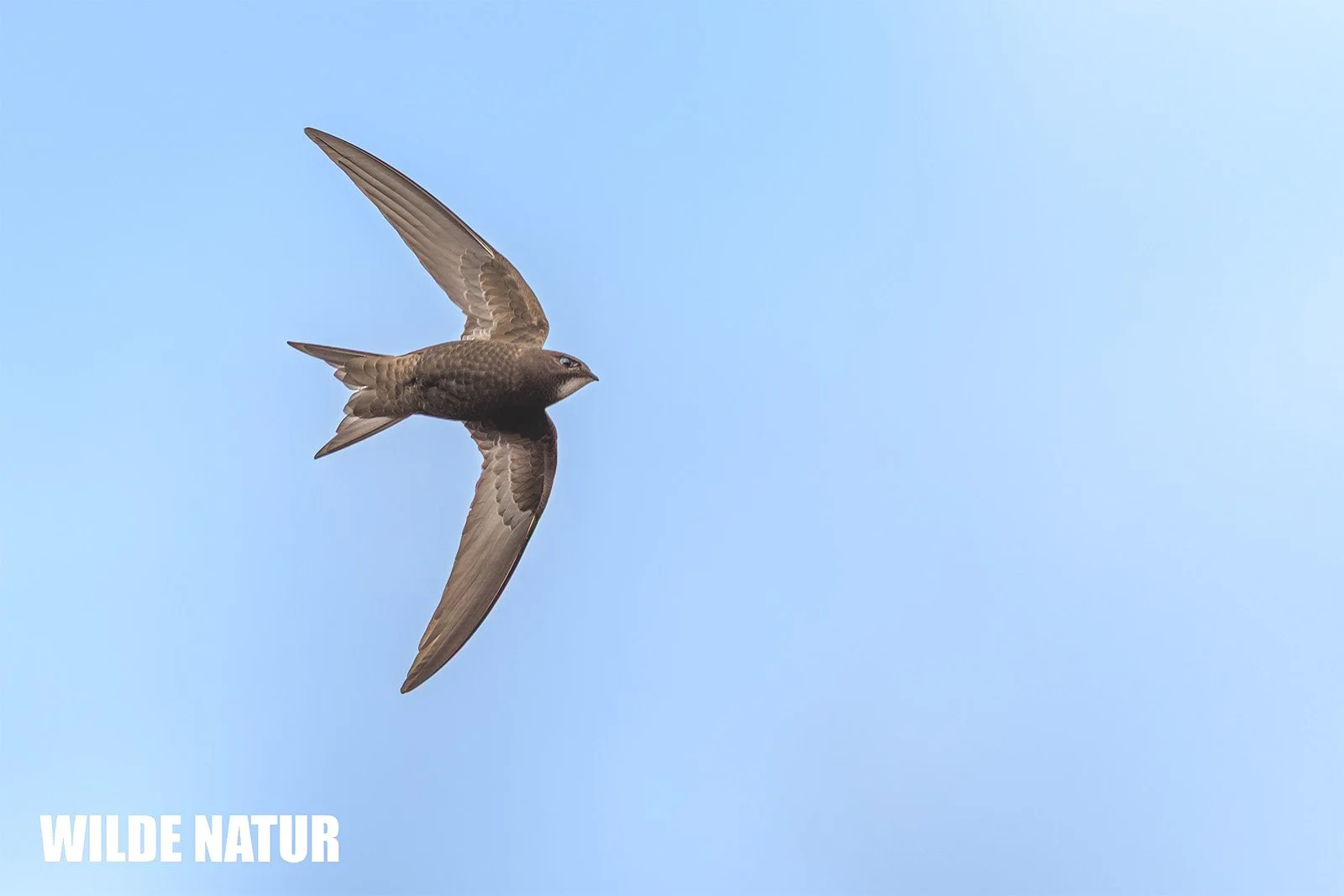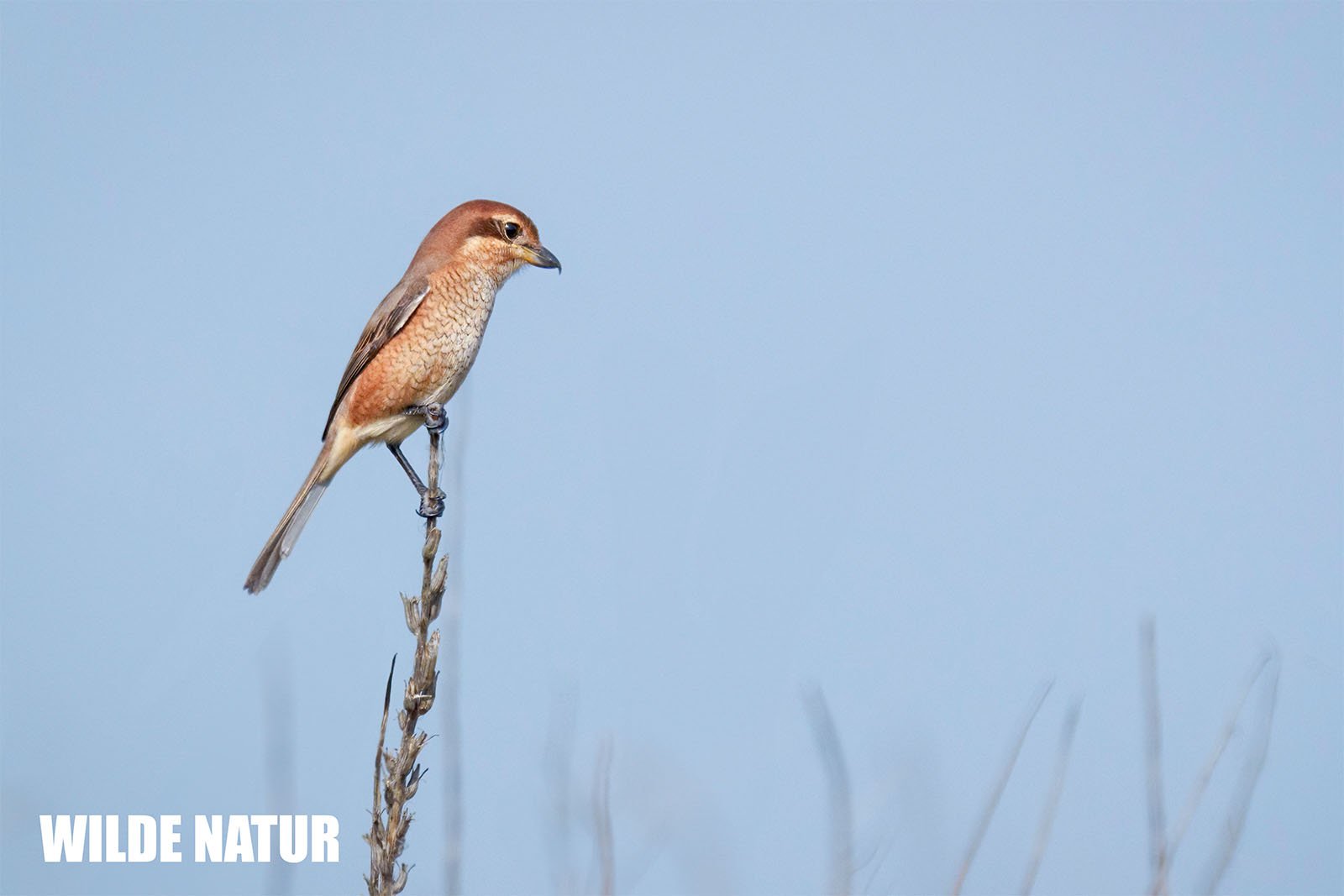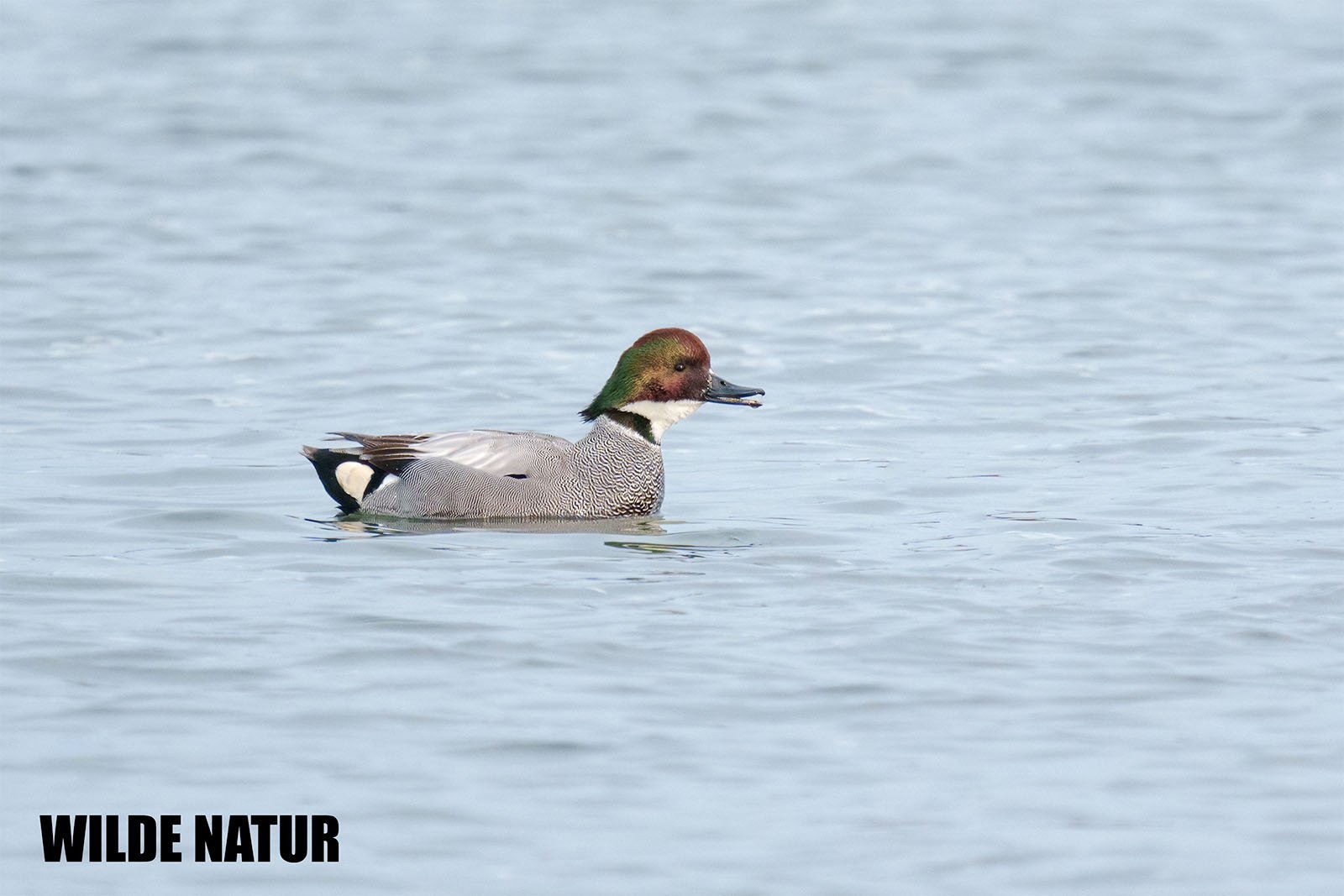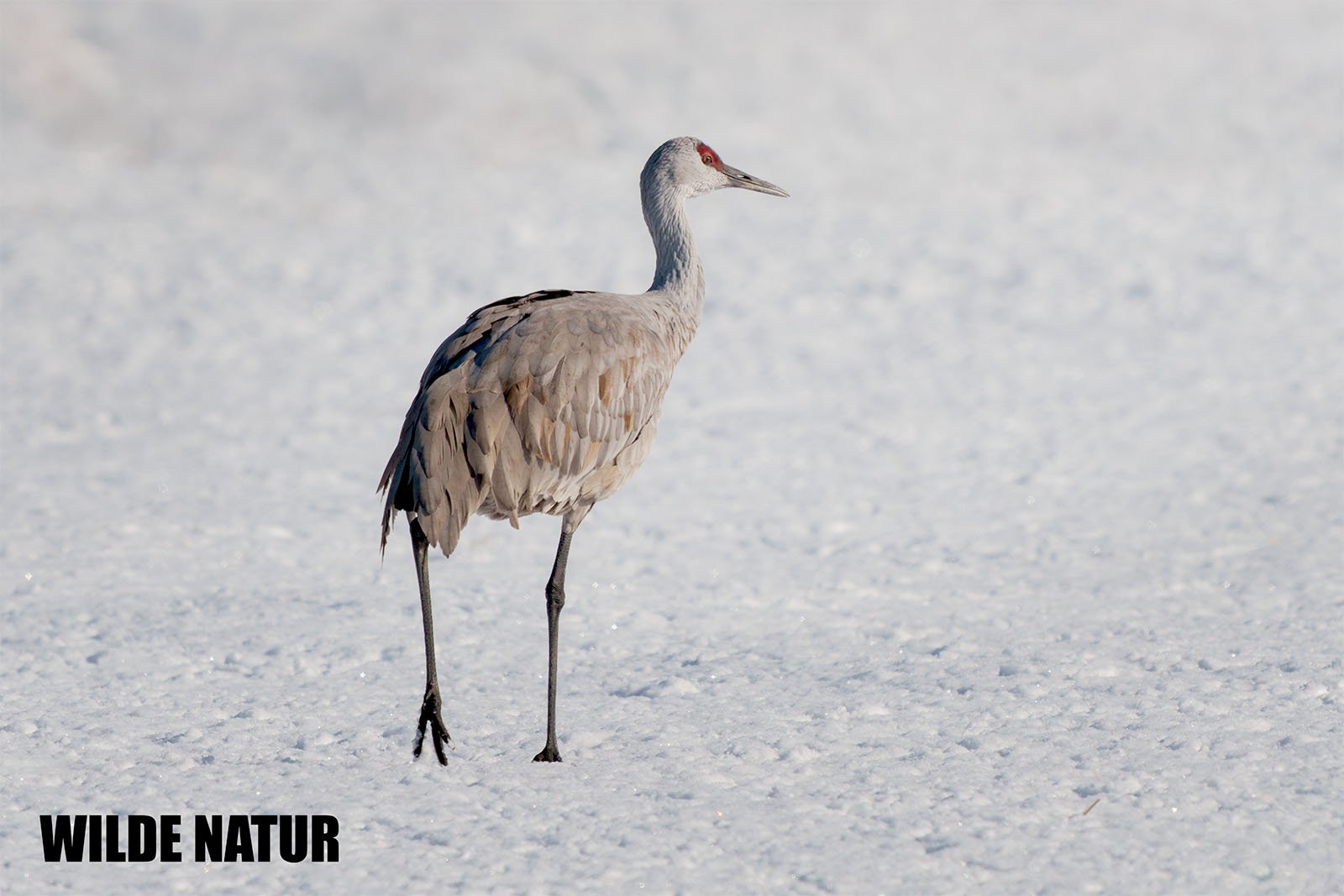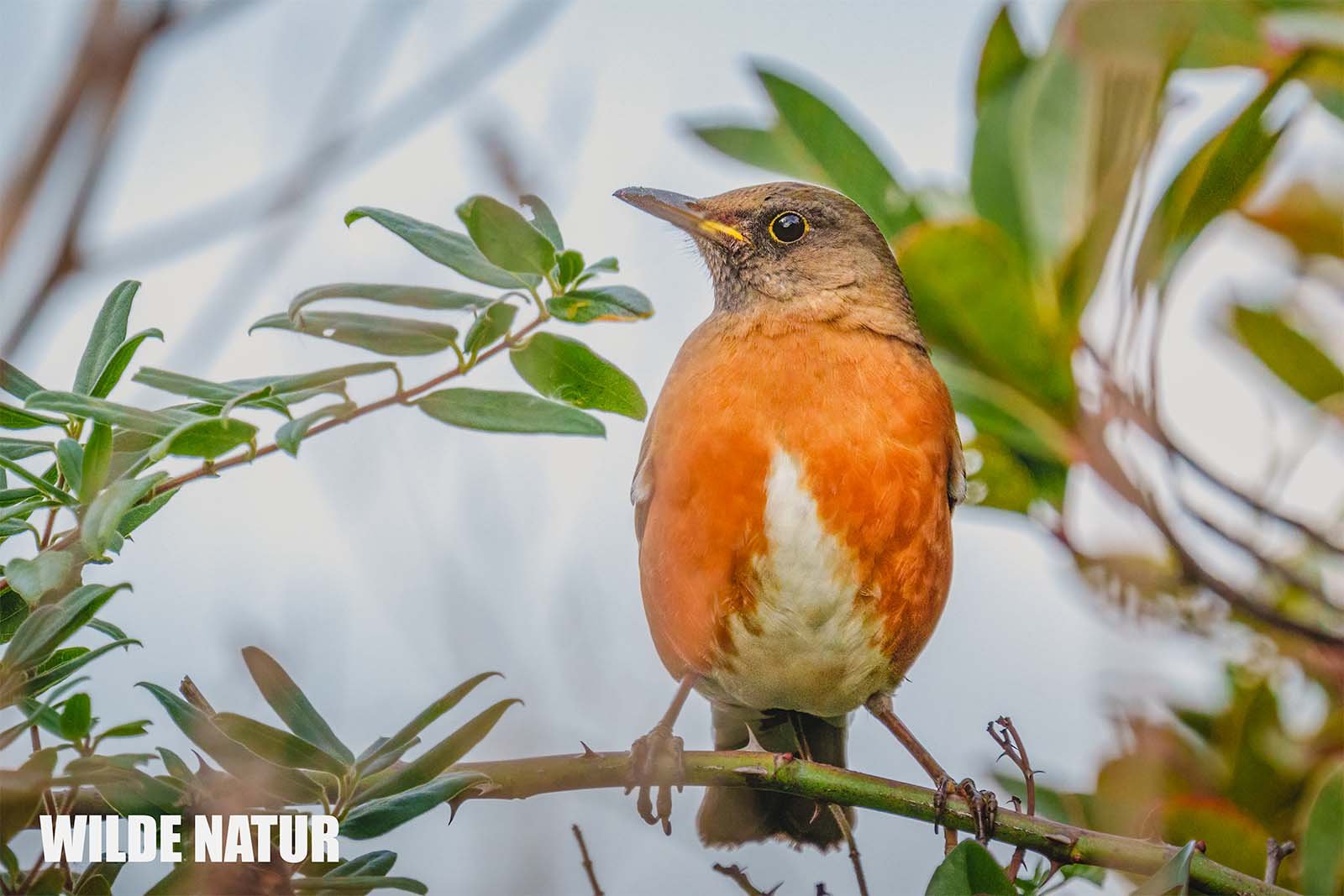Sandhill crane (Antigone canadensis)
Sandhill crane (Antigone canadensis) with gray plumage and red forehead stands on snow-covered ground in sunlight. Photo taken in Hokkaido / Japan.
Sandhill Crane: Rare Winter Guest from North America
The Sandhill Crane (Antigone canadensis) is a rare winter visitor to Japan. With a red forehead and grey plumage, it sometimes joins crane flocks in Izumi, Kyushu – a fascinating sight for birdwatchers.
Shortlist
Tall grey crane with a red crown – striking yet subtle
Rare winter visitor to Japan, mostly in Izumi
Migrant from Canada and Alaska
Feeds in rice fields, often with other cranes
Protected in Japan, stable population globally
Scientific Name: Antigone canadensis
Common Name: Sandhill Crane
German Name: Kanadakranich
Height: 100–120 cm
Weight: 3,000–4,500 g
Plumage: Grey, often rust-stained, with red crown patch
Bill: Long, pointed, dark
Diet: Seeds, roots, insects, small animals
Breeding: In North America (not in Japan), 1–2 eggs
Seasonality: Rare winter visitor (Nov–Mar)
Habitat: Rice fields, wetlands
Migration: Long-distance migrant
Status: Globally stable, rare but protected in Japan
Table of Contents
- Introduction
- Appearance
- Habitat in Japan
- Diet
- Breeding
- Migration
- Population Status
- Where and How to Spot It
- Summary Sheet
- FAQ – Frequently Asked Questions
Introduction
From the vast plains of Canada and Alaska, this elegant traveler crosses thousands of kilometers to quietly land in a rice field in southern Japan. The Sandhill Crane is a rare but exciting winter visitor to Japan, particularly in Izumi, Kyushu.
When seen among larger crane species like the White-naped or Red-crowned Cranes, it is immediately recognizable – a grey outsider with a red forehead and a calm, alert demeanor.
Appearance
Slightly smaller and more compact than other cranes, the Sandhill Crane is nonetheless striking due to its distinct color pattern and build.
Key Features:
- Grey plumage, often with a rusty tint from self-applied mud containing iron
- A bright red, featherless crown that stands out against the muted body
- Red eyes, long dark bill, and long grey-to-black legs
- In flight: extended neck and legs, steady and strong wingbeats
It has a rugged but graceful appearance, exuding quiet strength.
Habitat in Japan
In Japan, the Sandhill Crane is only a winter visitor, and almost exclusively recorded in Izumi (Kagoshima Prefecture), where large flocks of other crane species gather.
Preferred Japanese habitats:
- Rice fields with leftover grain or moist soil
- Wet meadows and open agricultural areas
- Always seeks low-disturbance areas with good visibility and safe roosts
It often mingles with other cranes but stands out due to its distinct size and head markings.
Diet
The Sandhill Crane is a versatile omnivore that mainly consumes plant material.
Typical diet includes:
- Seeds, grains (e.g., rice), roots, tubers
- Insects, worms, and small vertebrates when available
Feeding is slow and deliberate, with the bird walking and foraging methodically. In Izumi, it is commonly seen feeding alongside White-naped Cranes.
Breeding
The Sandhill Crane does not breed in Japan. Its nesting areas are located in Canada, Alaska, and the northern U.S..
Breeding behavior:
- Begins around April
- Nest is a shallow platform on the ground in wetland areas
- Clutch typically includes 1–2 eggs
- Both parents participate in raising the young
- Chicks are precocial, leaving the nest soon after hatching
Migration
A classic long-distance migrant, the Sandhill Crane occasionally appears in Japan due to unusual migratory paths, likely crossing from Alaska via eastern Russia.
In Japan:
- Arrival: November
- Departure: February–March
- Usually seen in Izumi, often alone or in small groups
- Sightings are rare and often reported among crane-watching communities
Population Status
Globally, the Sandhill Crane is not threatened – its populations in North America are large and stable.
In Japan:
- It is rare but recognized and protected
- Conservation measures in Izumi benefit all wintering cranes, including this species
- Included in official crane monitoring programs
Where and How to Spot It
Best chance to see a Sandhill Crane in Japan is during the winter months (November to February) in Izumi.
Tips:
- Look for a slightly smaller, more compact crane among larger species
- Note the rusty-colored plumage and distinct red crown
- It moves more calmly and often forages on the edges of larger groups
- Use binoculars and be patient – it's a quiet visitor
Summary Sheet – Sandhill Crane
| Feature | Description |
|---|---|
| Scientific Name | Antigone canadensis |
| Common Name | Sandhill Crane |
| German Name | Kanadakranich |
| Height | 100–120 cm |
| Weight | 3,000–4,500 g |
| Plumage | Grey, often rust-stained; red crown |
| Bill | Long, sharp, dark |
| Diet | Seeds, roots, small animals |
| Breeding | In North America only – 1–2 eggs |
| Seasonality | Rare winter visitor (Nov–Mar) |
| Habitat | Rice fields, wetlands |
| Migration | Long-distance migrant |
| Status | Globally stable; rare and protected in Japan |
FAQ – Frequently Asked Questions
1. Where can I see the Sandhill Crane in Japan?
Mostly in Izumi, Kagoshima Prefecture, during the winter season (Nov–Mar).
2. Why does it look rusty-brown?
It deliberately stains its feathers with iron-rich mud – possibly for camouflage or parasite control.
3. How does it differ from other cranes?
Smaller and more compact than the White-naped or Red-crowned Crane, with a red crown patch but no white neck stripe.
4. Does it breed in Japan?
No. Breeding occurs in Canada, Alaska, and parts of the northern U.S.
5. Is it endangered?
No, globally it is common. In Japan, it is rare but protected as part of crane conservation efforts.

